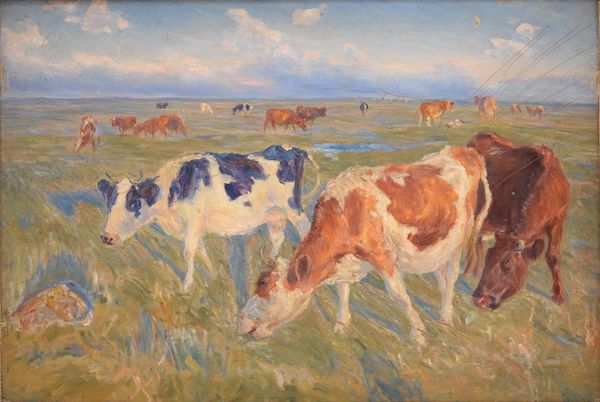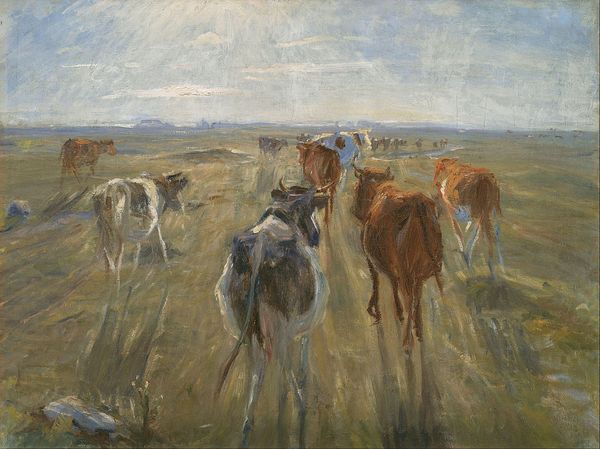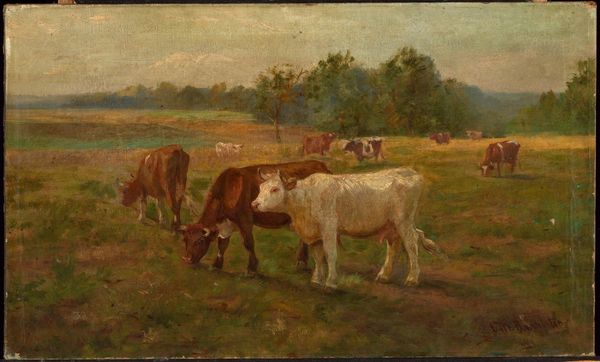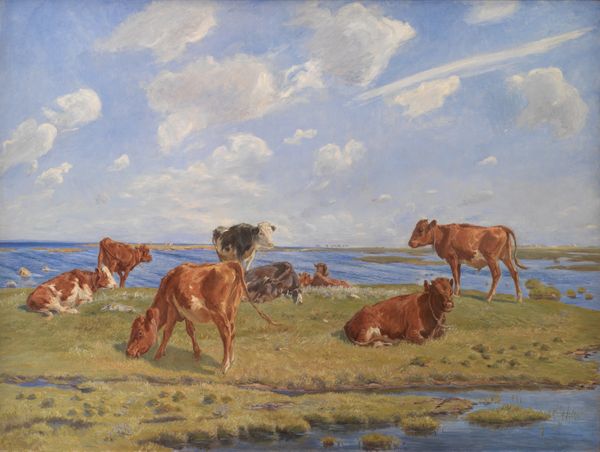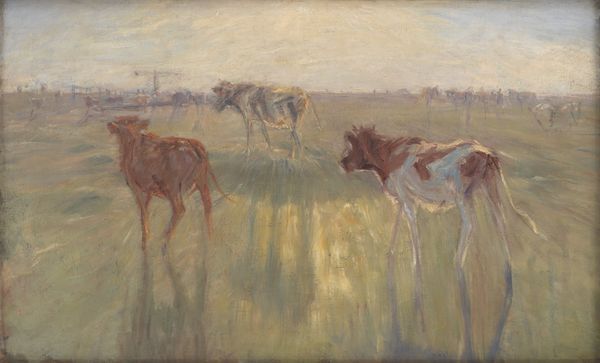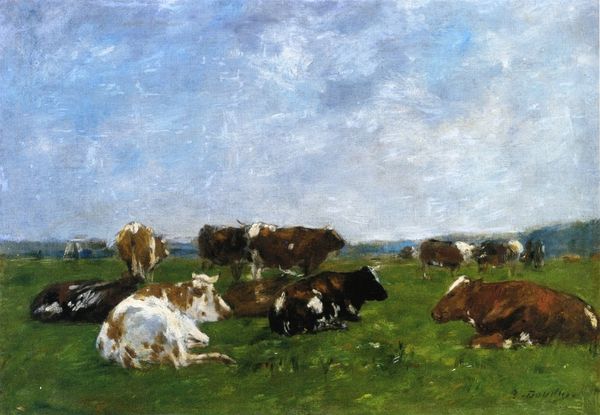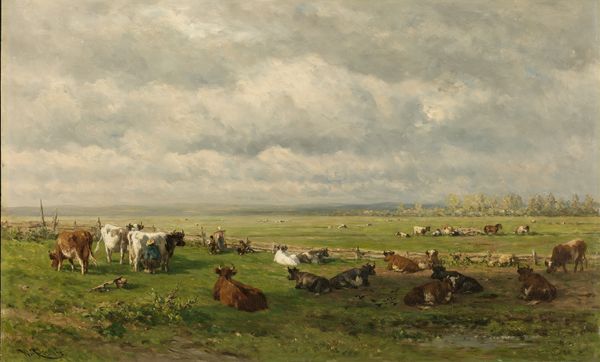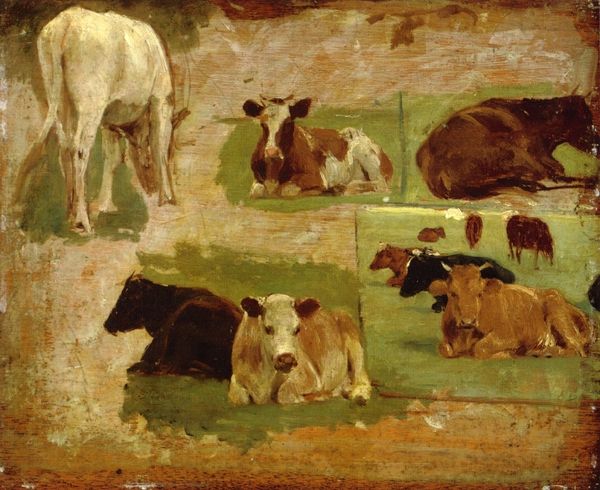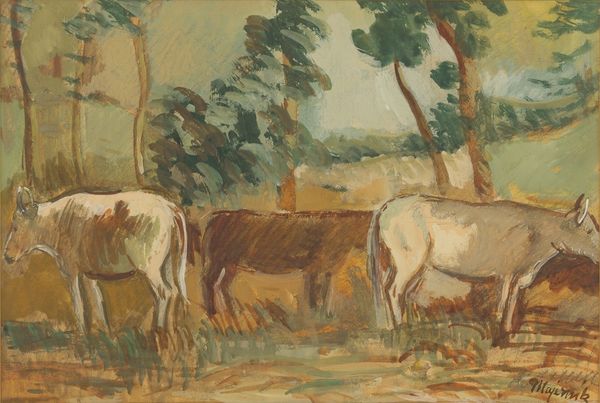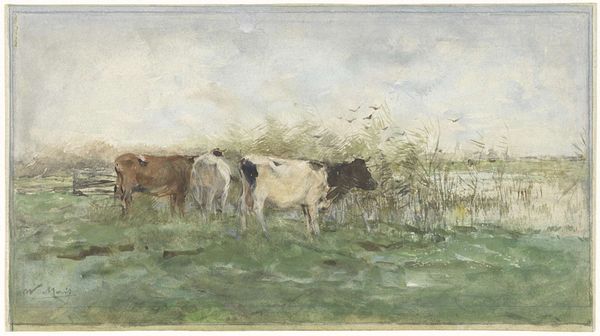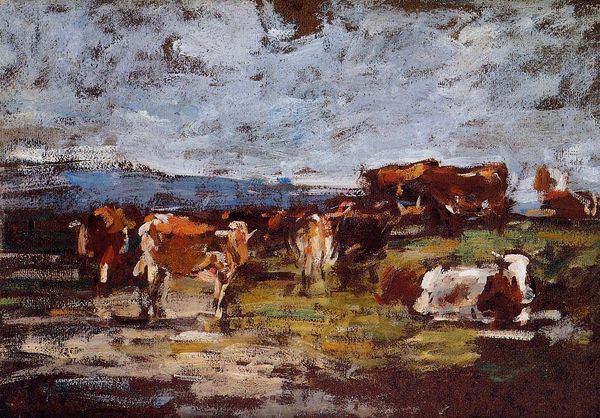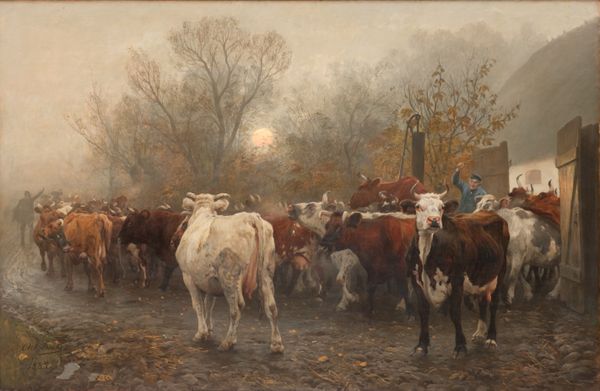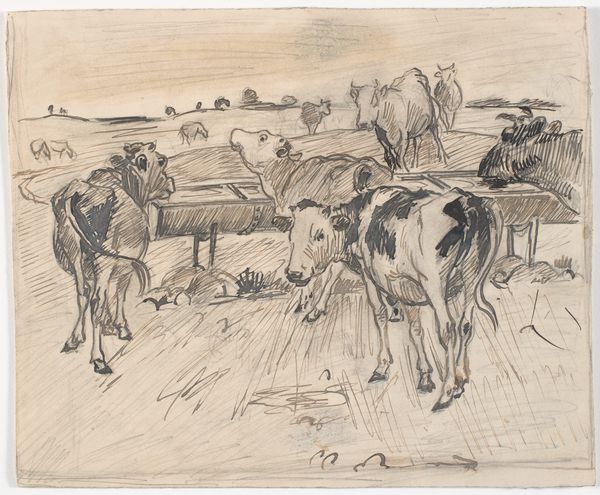
painting, plein-air, oil-paint
#
painting
#
impressionism
#
plein-air
#
oil-paint
#
landscape
#
oil painting
#
watercolour illustration
#
genre-painting
#
realism
Dimensions: 58 cm (height) x 82.5 cm (width) (Netto), 75.5 cm (height) x 99.8 cm (width) x 9.3 cm (depth) (Brutto)
Curator: This is Theodor Philipsen’s "The Milking Place at Meilgaard," painted in 1884. A beautiful example of Danish Impressionism from the Statens Museum for Kunst. Editor: My first impression is of utter stillness. These cows are utterly relaxed, soaking up the sun. Is it just me, or can you almost hear the buzzing of flies in this heat? Curator: Philipsen’s approach here is really quite direct and honest. He brings us face to face with agricultural labor, rendered in oil with an appreciation of both realism and the newer impressionistic techniques. You can see his dedication to painting en plein air, right there on the farm. Editor: Yes, you know, thinking about ‘agricultural labour’ brings in this connection of high art and craft, what is considered the everyday processes for sustaining life. The materials here really amplify that tension. What kind of paint did Philipsen utilize to translate the rustic setting into brushstrokes? Curator: He primarily used oil paints, which allowed for a richness and depth in capturing the light and textures, very typical of plein air work from the period. But beyond just technique, notice how the artist has captured the mundane – cows lazing, a single farm worker at work. Editor: The way that fence cuts diagonally into the composition is pretty masterful. I like how Philipsen challenges us to rethink value in rural Danish life. But beyond the historical implications, what does the piece evoke for you? Curator: Melancholy, maybe? A fleeting summer moment captured before everything shifts. The shadows suggest the day is moving on and the idyllic moment can’t hold still for much longer. Perhaps even the beginnings of realizing industry's impact on agriculture is in here. Editor: Yes, definitely, the passing of an old order, isn't it? Even a quiet foreshadowing in what appears as an unremarkable pastoral scene, I wonder what impact paintings like this had at the time. Food for thought, indeed. Curator: It leaves you contemplating the essence of the agrarian experience doesn’t it, and in some way a collective memory of those landscapes, even if we haven't seen it directly, painting these themes ensures our ongoing relationship to land continues in art. Editor: Absolutely. A compelling merge of method and meaning in one beautiful landscape piece!
Comments
No comments
Be the first to comment and join the conversation on the ultimate creative platform.
